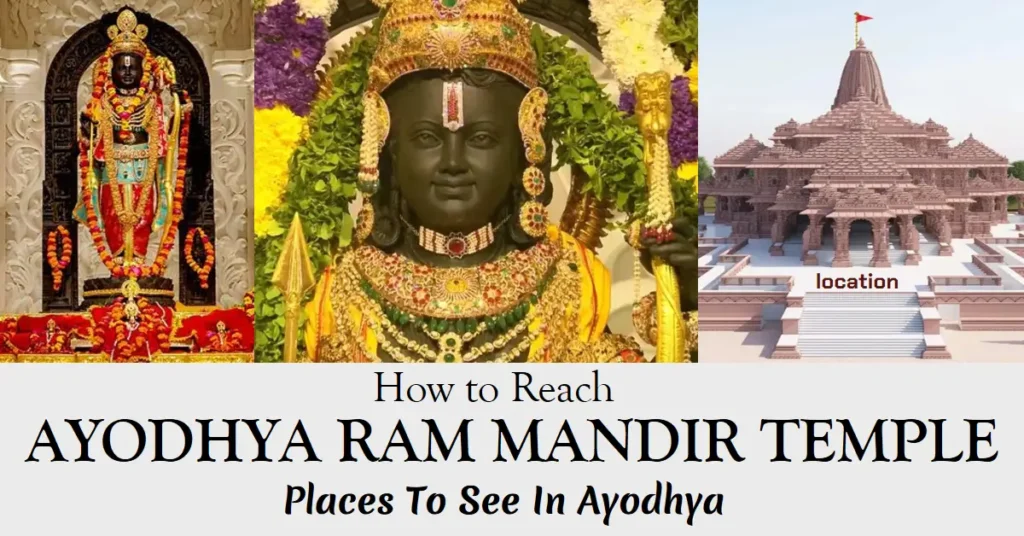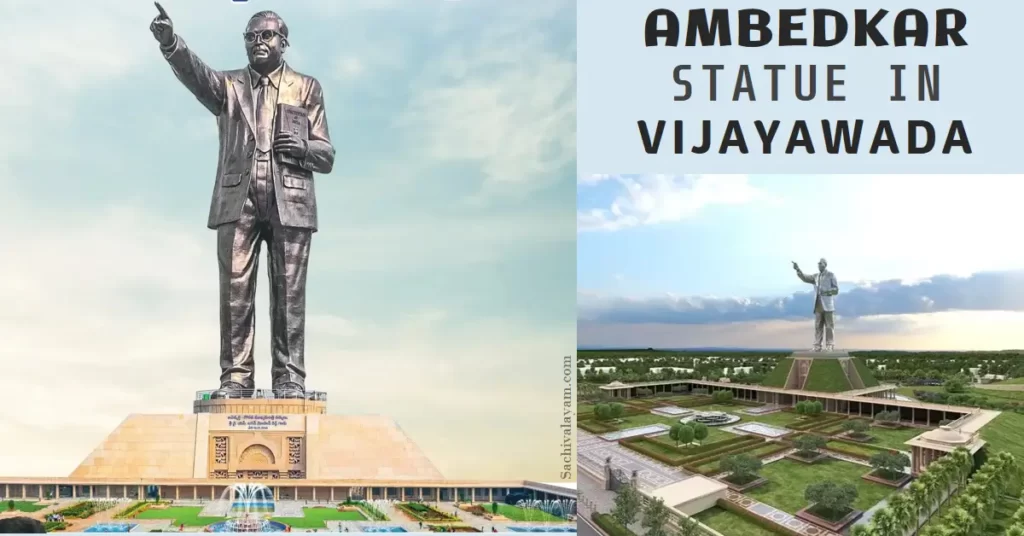ayodhya ka shri ram mandir temple janmabhoomi and accommodation in uttar pradesh. new ram mandir murti idol statue image photo website ayodhya location design cost stone sticker
Table of Contents
ToggleHow to Reach Ram Janmabhoomi Ayodhya By Train, Bus, Car, Air?
Ayodhya, the birthplace of Lord Rama, is one of the most sacred places in India. With the construction of the Ram Temple in full swing, the excitement to visit this holy city has reached new heights. Here’s a look at how you can reach Ayodhya:
By Air:
- Maharshi Valmiki International Airport: Ayodhya now boasts its own international airport, conveniently located just outside the city. Airlines like IndiGo, Vistara, and Air India offer both non-stop and connecting flights from Delhi and other major cities. Book your tickets well in advance, ideally 2 weeks to a month before your trip.
By Train:
- Direct Trains: Several direct trains connect Delhi and Ayodhya, making it a comfortable and budget-friendly option. The journey takes around 10-11 hours. Popular trains include the SaryuYamuna Express, the Awadh Express, and the Ayodhya Cantt Express.
By Bus:
- Regular Buses: Uttar Pradesh State Road Transport Corporation (UPSRTC) and several private operators run regular buses from Delhi and other nearby cities to Ayodhya. The journey takes about 12-14 hours, making it a more affordable option compared to trains.
By Road:
- Self-Drive or Taxi: If you prefer the flexibility of your own vehicle, driving from Delhi to Ayodhya is a scenic option. The Yamuna Expressway and NH 19 offer a comfortable driving experience. The journey takes approximately 10-12 hours. Taxis are also readily available for hire from Delhi.
Places To See In Ayodhya
1.Saryu Ghat
Your Ayodhya Darshan begins with a cleansing bath in the holy Saryu River. Choose from many ghats along its banks, each offering its own history and charm.
From Naya Ghat to Guptar Ghat, a dip washes away both known and unknown sins, leaving you purified. Boatmen eagerly welcome you to explore the river’s beauty, gliding past all the sacred ghats.
As dusk settles, witness the awe-inspiring aarti ceremony, where flickering lamps dance on the water, illuminating the evening with devotion. Let Ayodhya Darshan wash over you, leaving you spiritually renewed and connected to the divine.
2.Ram Ki Paddy
Near Saryu Ghat stands Ram Ki Padi, a legendary platform where Lord Rama blessed weary pilgrims with the merit of their entire journey after a simple evening bath.
Though the water here once mysteriously vanished, it now flows from the Saryu, keeping the legacy alive. A dip in Ram Ki Padi holds the promise of spiritual reward, making it a must-visit on your Ayodhya pilgrimage. Remember, this holy spot even hosted the world’s largest lamp festival, beckoning devotees from every corner of the globe. So, come, immerse yourself in the magic of Ram Ki Padi and let its blessings guide you.
3.Raja Dasaratha Palace
This palace underwent several renovations during the mythological period. The palace of Chakravadi Maharaja Dasaratha is also known as Vishal Sthan or Bada Sthan.
The present-day Dasaratha Mahal has been transformed into a Pavitra Mandir (a sacred temple) where Lord Rama installed idols of Mother Sita, Laxman, Shatrughan, and Bharat. Shravan Mela, Chait Ram Navami, Kartik Mela, and Deepawali are celebrated, along with Ram Vivah (marriage).
It is believed that the Chakravarti King Dasaratha lived here with his legacy.
4.Shri Nageshwarnath Temple
Situated in Ram ki Paidi, this temple dedicated to Lord Shiva is believed to have been constructed by Kush, the younger son of Shri Ram.
Legend has it that while bathing in Sarayu, Kush lost his armlet, which was returned by a snake girl named Nag Kanya, who was captivated by him. As she was a devotee of Shiva, Kush had the temple built for her.
The temple remained in good condition until the reign of King Vikramaditya, when it was renovated in 1750 by Nawab Safdarjung and Minister Naval Rai.
The festival of Shivratri is celebrated with grandeur at this temple, with the Shiva procession holding significant importance. The festival draws in a large number of visitors and devotees.
5.Hanumangarhi
Hanumangarhi, situated on a raised mound on the right side of the Sarayu river in Ayodhya, is regarded as the most ancient temple.
Prior to paying a visit to Ram Janmabhoomi in Ayodhya, it is essential to first visit Hanumanji here. Legend has it that after vanquishing Lanka, Hanuman took up residence in a cave here and safeguarded Ram Janmabhoomi and Ramkot. Consequently, it earned the name Hanumangarh or Hanuman Kot.
It is also referred to as the abode of Hanumanji.
6.Kanak Bhawan
Queen Kaikeyi reportedly gifted Kanak Bhawan to Mother Sita in person. The temple has undergone multiple constructions and renovations throughout the years. The current structure was established in 1891 by the queen of Orksha. Visitors to Ayodhya are encouraged to include Hanumangarhi, Shri Ram Janmabhoomi, and Kanak Bhawan in their itinerary.
In the idyllic Treta Yuga, as the divine Lord Rama triumphantly broke Shiva’s bow in Mithila, a garland adorned his neck, placed by the love of his life, Janaki. That night, a thought bloomed in Rama’s heart: Ayodhya, his beloved kingdom, needed a haven worthy of his future queen, Janaknandini Vaidehi.
Legend whispers that at the very same moment, Queen Kaikeyi in Ayodhya received a divine vision. In a dream, she saw a breathtaking palace bathed in celestial light, the Kanak Bhavan of Saket Dham, a mythical city associated with Rama. Awakened by this vision, she knew it was the blueprint for Rama and Janaki’s future home.
Queen Kaikeyi, with unwavering devotion, shared this divine dream with Maharaja Dasaratha. Together, they embarked on the magnificent task of creating a replica of the ethereal Kanak Bhavan in Ayodhya. This, the legend goes, was the genesis of the Kanak Bhawan we know today, a testament to love, faith, and the power of dreams.
7.Darshan of Lord Shri Ramlala
Ayodhya, the birthplace of Lord Ram, is considered the foremost among the seven sacred cities of India. These cities include Ayodhya, Mathura, Maya (Haridwar), Kashi, Kanchi, Avantika (Ujjayini), and Dwarka.
When Maharaj Manu needed a city to be built, Maharishi Vashishtha chose a land on the banks of the river Saryu.
It was on this land that Devshilpi Vishwakarma ji established the city of Ayodhya. Ayodhya is referred to as the city of God in the Arthveda and is believed to be situated on Lord Vishnu’s Sudarshan Chakra, as mentioned in the Skandpuran.
Apart from being renowned as the birthplace of Lord Ram, Ayodhya has also witnessed the birth of numerous other sages, pilgrims, great warriors, and Chakraborty emperors.
According to Buddhist beliefs, Lord Buddha resided in Ayodhya (Saket) for approximately 16 years. In this article, we will guide you on how to visit the temple of Lord Ram and explore other famous temples in Ayodhya during your journey.
8.Shri Ram Janmabhoomi Temple Workshop
The stone carving project for the construction of Shri Ram Janmabhoomi in Ayodhya has been ongoing since 1992. Currently, the construction work on the pillars, which are essential for the temple’s construction, is nearing completion.
Additionally, a significant portion of the roof wires has already been carved. Presently, the focus has shifted to the construction of beam straps that will connect the pillars at Ramkarsevak Puram. Notably, artists from Rajasthan have been enlisted for this task, marking the first time their expertise has been utilized.
Concurrently, a three-day yagya ceremony has commenced within the Shri Ram Janmabhoomi complex.
9.Tulsi Smarak Bhawan Museum
Ayodhya Research Institute, a renowned research institute, is housed within this memorial.
The institute boasts a vast library that holds a collection of valuable books authored by esteemed historians and scholars. Additionally, the memorial is home to the Ram Katha Museum, which was integrated into the premises in 1988.
The primary objective of this museum is to gather factual information pertaining to Shri Ram, preserve it, and exhibit various antiquities. Furthermore, this building serves as a cultural hub where the traditional Ram Leela is performed daily from 6 pm to 9 pm, starting from 20 May 2004.
In addition to the performances, prayers, religious discussions, sermons, devotional songs, music, and kirtan are regularly organized within this center. Notably, Tulsi Jayanti, a significant celebration, is observed with immense enthusiasm on the seventh day of the month of Sawan.
Accommodation In Ayodhya
Budget Hotels in Ayodhya
If you are visiting Ayodhya and considering accommodation options, staying in the affordable hotels near Ram Janmabhoomi and Ayodhya Railway Station would be highly advantageous.
To truly experience the divine aura of Shri Ram Janmabhoomi Ayodhya, it is recommended to spend at least one night in this sacred place.
There are various budget hotels and dharamshalas available for your convenience. While the facilities in dharamshalas may not be top-notch, you can still consider Birla Dharamshala or Janaki Mahal as they offer reasonably priced and decent accommodations.
These establishments provide clean and well-maintained rooms at a comfortable rate of 500 to 1000 rupees.
Food Facility in Ayodhya
This location boasts a wide selection of restaurants that cater to various budgets.
Additionally, numerous Dharamshalas offer both accommodation and delectable meals at highly affordable prices. The food served at these Dharamshalas is not only economical but also incredibly appetizing.
Furthermore, Dharamshala is a recommended destination for food enthusiasts. Kanak Rasoi, managed by Kanak Bhawan Trust, offers an extensive menu of food and snacks that are prepared without the use of onion and garlic.
The prices at Kanak Rasoi are remarkably reasonable, allowing you to savor delicious meals and prasad without straining your finances.
The Ram Mandir in Ayodhya, a grand temple under construction, is poised to become a cultural and religious landmark in India.
Its design, drawing inspiration from traditional Hindu temple architecture of North India, specifically the Nagara style, promises a magnificent structure that blends rich heritage with modern techniques.
Standing Tall:
- The temple complex will sprawl over 70 acres, encompassing the main temple, various pavilions, a circumambulation path, and support buildings.
- The central attraction will be the main temple, rising 161 feet tall on a raised platform (jagati).
- Three storeys built with pink sandstone will culminate in five majestic domes, the central one adorned with a gold-plated kalash.
- Three grand entrances, the main one facing east towards the Saryu river, will welcome devotees with intricate carvings and sculptures depicting scenes from the Ramayana.
A Glimpse Inside:
- The central hall (mandap) will house the 10.5-foot idol of Lord Ram, carved from a single block of black granite.
- Idols of Lord Ram’s brothers and wife, Sita, will accompany the central deity.
Beyond the Main Temple:
- The temple complex will boast various mandaps or pavilions, each serving a unique purpose.
- The Nidhi Van will be a replica of Lord Ram’s forest abode, while the Sugriv Parikrama will offer a breathtaking 360-degree view of Ayodhya.
- Devotees can experience a glimpse of Sita’s life during exile at the Sita Rasoi, a replica of her kitchen.
A Path of Devotion:
- A 5-foot wide parikrama path built with red sandstone will encircle the complex, inviting devotees to circumambulate the temple.
- Intricate carvings, small gardens, and fountains will line the path, adding to the spiritual ambiance.
A Fusion of Faith and Finesse:
- The Ram Mandir in Ayodhya will be a testament to the enduring legacy of Hindu temple architecture, showcasing its intricate artistry and symbolism.
- Modern engineering techniques will ensure structural integrity and durability, preserving the temple’s grandeur for generations to come.
- Above all, the Ram Mandir stands as a beacon of faith, a place where devotees can connect with their divine and immerse themselves in the rich cultural heritage of India.
The Ram Mandir in Ayodhya is much more than just a temple it is a symbol of hope, unity, and devotion. Its completion will mark a significant milestone in Indian history, drawing millions of pilgrims and visitors from around the world to witness its architectural splendor and experience the spiritual essence it embodies.
Ayodhya Ram Mandir Darshan Booking 2024
online booking for darshan at the Ayodhya Ram Mandir is temporarily suspended. This suspension is in effect until February 5, 2024.
- Wait for online booking to resume: The Trust has not yet announced when online booking will resume, but it is expected to be soon. You can check the website or call the helpline for the latest updates.
- Book a darshan pass through a travel agent: Some travel agents offer darshan packages that include booking a darshan pass. This can be a convenient option, but it is important to compare prices and services before booking.
- Visit the temple in person: If you are unable to book a darshan pass in advance, you can still visit the temple and try to get a darshan pass on arrival. However, this is not guaranteed, and you may have to wait in a long line.
Ayodhya Ram Mandir Timings
The timings for the Ayodhya Ram Mandir are:
- Morning Darshan: 7:00 AM to 11:30 AM
- Afternoon Darshan: 2:00 PM to 7:00 PM
Please note: The temple doors close for 2.5 hours in the afternoon for aarti and other rituals, from 12:00 PM to 2:30 PM.
- Aarti timings:
- Mangala Aarti: 7:00 AM
- Midday Aarti: 2:30 PM
- Evening Aarti: 6:30 PM
- Shayan Aarti: 7:30 PM (after which the temple closes)
- Free Darshan: This is the general queue for darshan, and there is no charge. However, there may be a long wait, especially during peak times.
- Special Darshan: This is a paid queue that allows you to skip the main queue and have a shorter darshan. Tickets can be purchased online or at the temple counter.
- Darshan for Senior Citizens and Divyangjan: There is a separate queue for senior citizens and people with disabilities.



